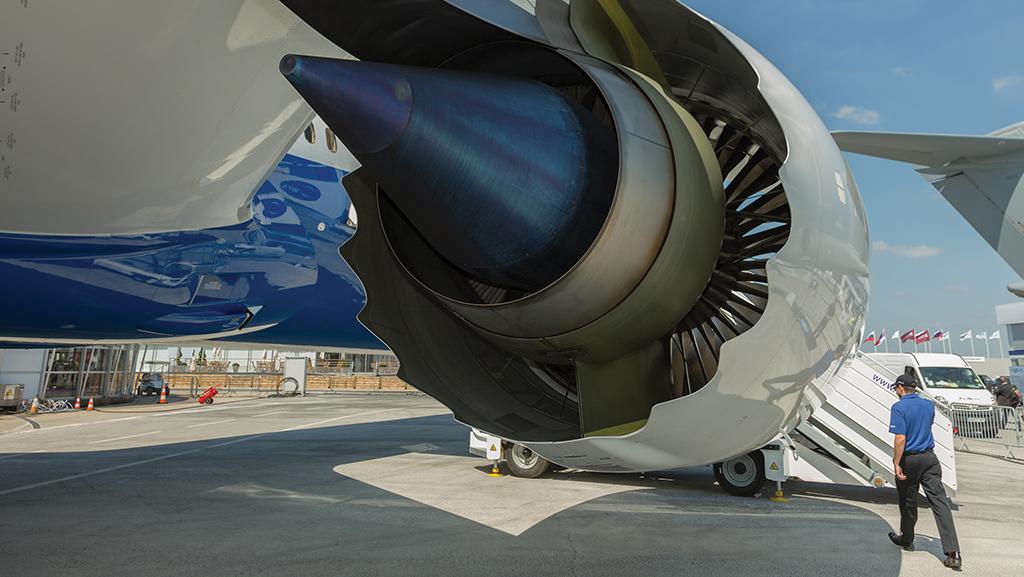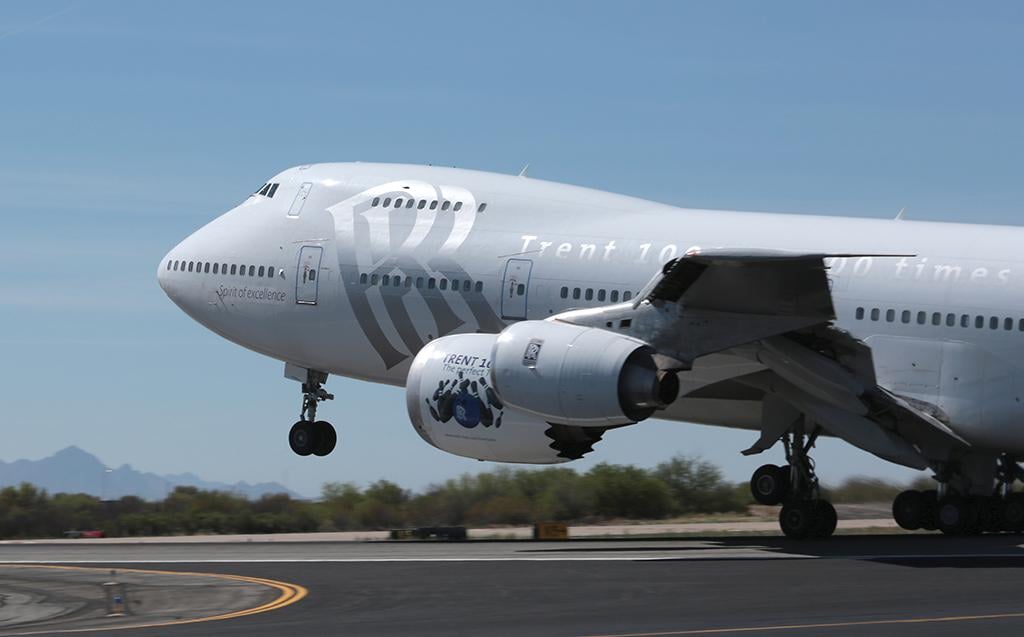
Few large commercial engine programs have suffered as many setbacks as the Rolls-Royce Trent 1000, which began commercial service in 2011 as the first engine for the Boeing 787.
All Nippon Airways (ANA) was the launch operator and the first to identify durability issues with the engine related to blade erosion and cracking. By 2017, Rolls-Royce admitted that durability issues extended to up to 500 engines across the global fleet.
A series of performance improvement packages was released as Rolls attempted to rectify the problems, but component weaknesses and premature wear persisted.
After its Package B and C releases failed to ensure reliability, the British manufacturer hoped to make a definitive break with its Trent 1000 issues by releasing the Trent 1000 TEN, an engine that incorporates elements of the newer Trent XWB and shares only about 25% parts commonality with the original Trent 1000. Again, though, such hopes proved short-lived, and Rolls-Royce announced in 2019 that durability issues had been discovered in the TEN’s high-pressure turbine (HPT) blades.
By late 2019, Rolls-Royce was predicting that problems across all Trent 1000 variants would cost about $3.1 billion in 2017-23—about $1 billion more than it had forecast a year earlier. There was also a sobering reassessment of the TEN, for which Rolls-Royce took a separate £1.4 billion ($1.8 billion) exceptional charge due to “near-term costs of customer disruption and remediation shop visits . . . and provisions against future losses on a small number of contracts due to our new estimate of HPT durability.”
Pandemic Impact
Despite the huge financial hit it was incurring on the Trent 1000, the worst of Rolls-Royce's problems seemed to be behind it in late 2019. A fix for the TEN’s HPT problems would be delayed until 2021, and even then it would not deliver the durability originally promised, but at least this was “the final fundamental issue to address,” the company said in 2019.
Unfortunately, an even bigger problem was emerging: a collapse in global passenger traffic due to the COVID-19 pandemic. This began in early 2020 and was still evident, particularly for widebody operations, two years later. In late 2021, Rolls-Royce said that large engine flying hours—which include the Trent 1000 and underpin its core revenue stream of maintenance sales—were still 50% below the pre-pandemic level of 2019.
The severity of the crisis quickly overshadowed the Trent 1000’s remaining problems. Prefacing an earnings-call question last August about when the new TEN HPT blades would be certified, Citigroup analyst Charles Armitage noted then that “we were sort of agonizing over this in 2019, and it seems to be rather less important in the whole scheme of things.” In response, Rolls-Royce CEO Warren East said that although the technical work was complete, “certifying our Trent 1000 blades is a bit lower down on [the FAA’s list of ] priorities.”
The FAA had reordered its priorities in response to escalating quality control problems that had paralyzed Boeing 787 production and deliveries. In normal times, that would have been another painful blow for the Trent 1000, which is one of two engine options for the 787. But since long-haul travel was in the doldrums, the impact of the 787 recall was blunted.

Furthermore, Rolls-Royce was able to use the downtime afforded by the pandemic to pursue Trent 1000 fixes. “We took the opportunity to continue working with customers to proactively incorporate those improvements that were available into their fleet and continued with validation and certification of the final two fixes,” says Scott Holland, Rolls-Royce’s vice president of marketing.
“The final two durability improvements are the new design of [intermediate-pressure compressor] blades for the Package B engine and the new design of the HPT blade for the Trent 1000 TEN, which are both planned to be available for incorporation into the fleet during the second half of this year,” Holland says.
Even so, Rolls-Royce suffered significant reputational damage from the Trent 1000’s problems prior to the COVID-19 crisis. In 2019, Air New Zealand, a Trent 1000 operator, ordered the General Electric GEnx-1B to power its latest order of eight 787-10s. The aircraft were intended to replace eight Boeing 777-200s powered by Trent 800 engines and to supplement the flag carrier’s fleet of Boing 787-9s, which use the Trent 1000. Then, in early 2020, the Trent 1000’s launch operator, ANA, also switched to the GEnx for an incremental order of 787s.
Although ANA and Air New Zealand were the most high-profile defections, customers placing first-time orders for the 787 have increasingly selected the GE powerplant over Rolls-Royce's. The Aviation Week Intelligence Network Commercial Aviation Fleet Discovery and MRO Forecast databases show that there are 782 Trent 1000s in service this year, giving it a 33% market share on the 787 aircraft platform. That share is forecast to decline to 26% over the next decade, however, and 1,148 Trent 1000 and 3,268 GEnx engines are expected to be in service in 2031.
Of the current Trent 1000 fleet, Rolls-Royce says about 250 aircraft are powered by Package B and C models, while 120 use the TEN. But the TEN is the current production standard, so as the fleet grows, so will its share of the Trent 1000 population.
Aftermarket Recovery
The vast majority of Trent 1000s are sold with accompanying full-service maintenance contracts, under which operators are billed according to the number of flight hours they operate. Although OEMs such as Rolls-Royce usually have some form of minimum payment provision to guard against the kind of collapse in flying hours experienced during the pandemic, their maintenance revenues still took a massive hit.
“Flying hours were, of course, massively reduced for all engine types at the height of COVID, and the Trent 1000 was no exception, although we did see a number of our Trent 1000 operators using the 787s for cargo and flying both [personal protective equipment] and vaccines,” Holland says.
Rolls-Royce notes, however, that the impact on the Trent 1000 was delayed. “Early on in the pandemic, during the early part of 2020, the number of shop visits remained roughly at pre-pandemic levels as we continued to drive durability improvements into the fleet and return serviceable spare engines back to customers,” Holland says.
Large-engine service revenue for the first six months of 2021 was about a third lower for Rolls-Royce than in the equivalent pre-pandemic period in 2019. Meanwhile, Aviation Week estimates that the Trent 1000 maintenance market will be worth about $850 million in 2022 and about $1.5 billion in 2023. Thereafter, it is projected to fall to a 2026 level of about $950 million, before climbing steadily to reach $1.8 billion in 2030.
Demonstrating the greater popularity of its rival, the competing GEnx has a maintenance market already worth $1.8 billion in 2022, according to Aviation Week data, which also forecasts that GEnx maintenance will be worth $5.6 billion by 2029.
Beyond the Pandemic, Beyond Jet A
Despite the ongoing disruption to international travel, Rolls-Royce says that 2022 has already shown signs of recovery in the long-haul market, a recovery that it expects will be led by new-technology aircraft.
“Trent 1000-powered 787s are among the most fuel-efficient aircraft in an airline operator’s fleet and are the ideal aircraft to spearhead the recovery in their long-haul operations,” Holland says. “In fact, at the end of 2021, there were a number of our Trent 1000 operators back up at 2019 pre-pandemic levels of utilization of their Boeing 787s.”
Looking further ahead, the OEM appreciates that sustainability will play an increasingly important role in airline operations and acknowledges that despite the Trent 1000’s low fuel burn relative to older engines, more needs to be done if aviation is to progress toward a goal of net-zero emissions by 2050.
To that end, Rolls-Royce has conducted tests of the Trent 1000 running on 100% sustainable aviation fuel (SAF), both on the ground at its Derby, England, headquarters and on its Boeing 747-200 test aircraft. The ground tests included 15 hr. of the engine running with 19 starts, five accelerations and decelerations as well as 33 fuel dips to explore combustor extinction boundary and relight behaviors.
“Tests for changes in operability, ignition, handling, weak stability and quick relights found negligible differences with conventional fuel,” Holland says.
Having thus far encountered no technical obstacle to using 100% SAF, Rolls-Royce has committed to ensuring that all its Trent engines are compatible with SAF by 2023.





